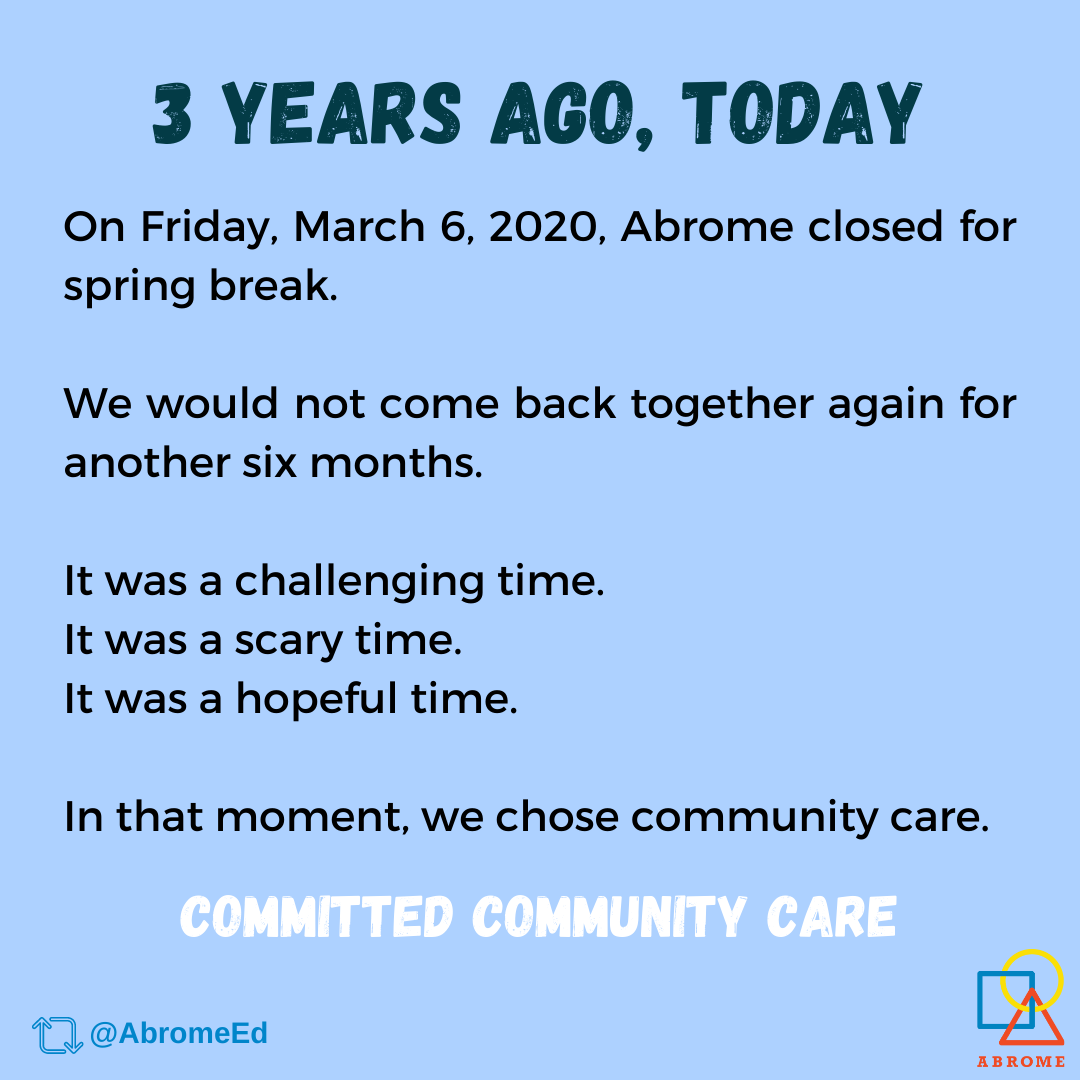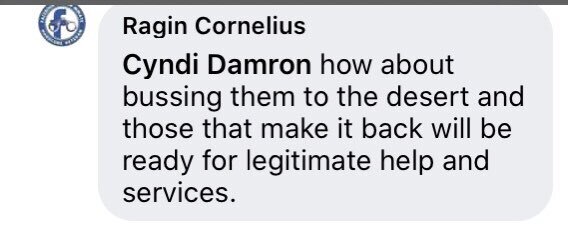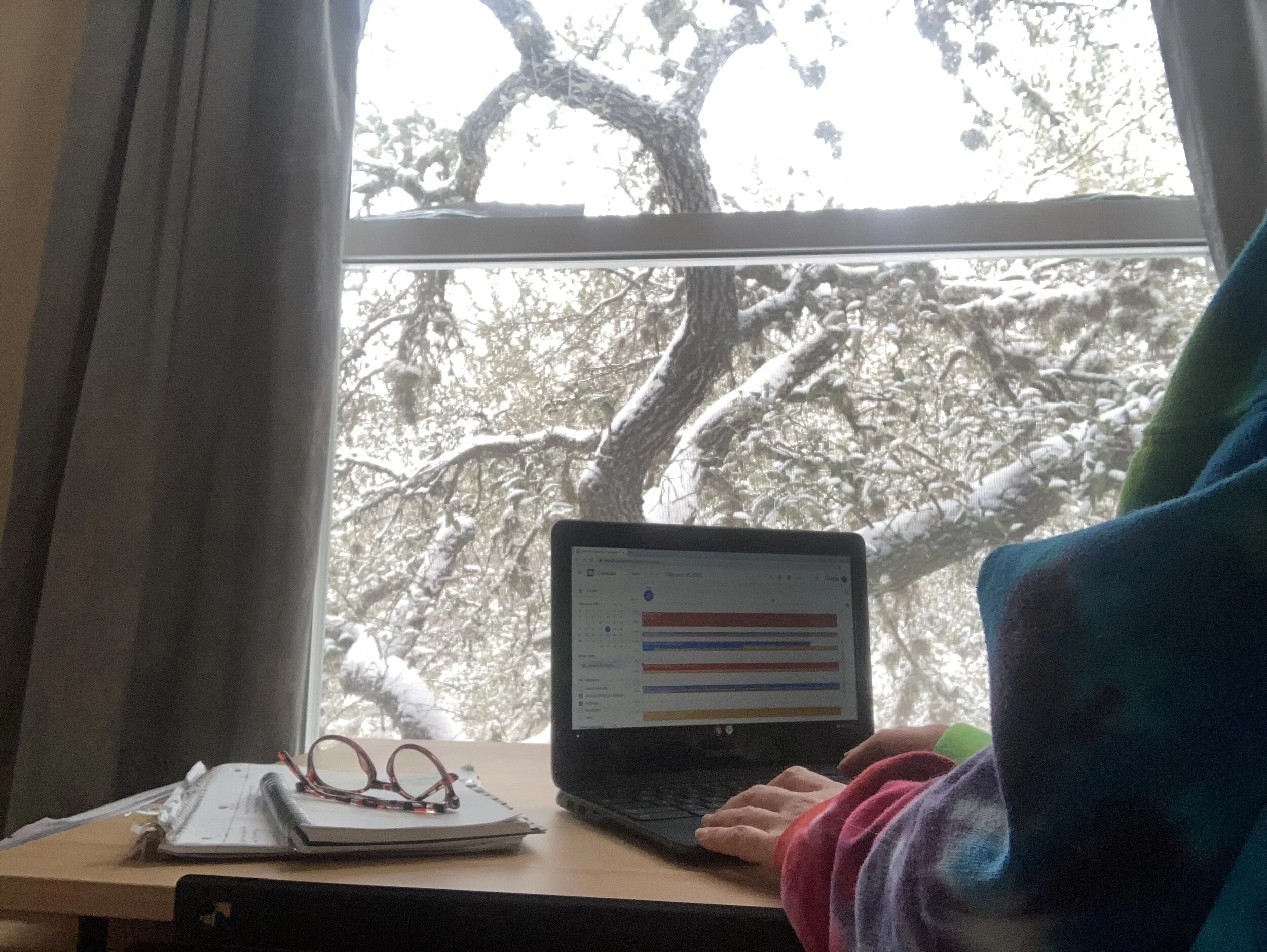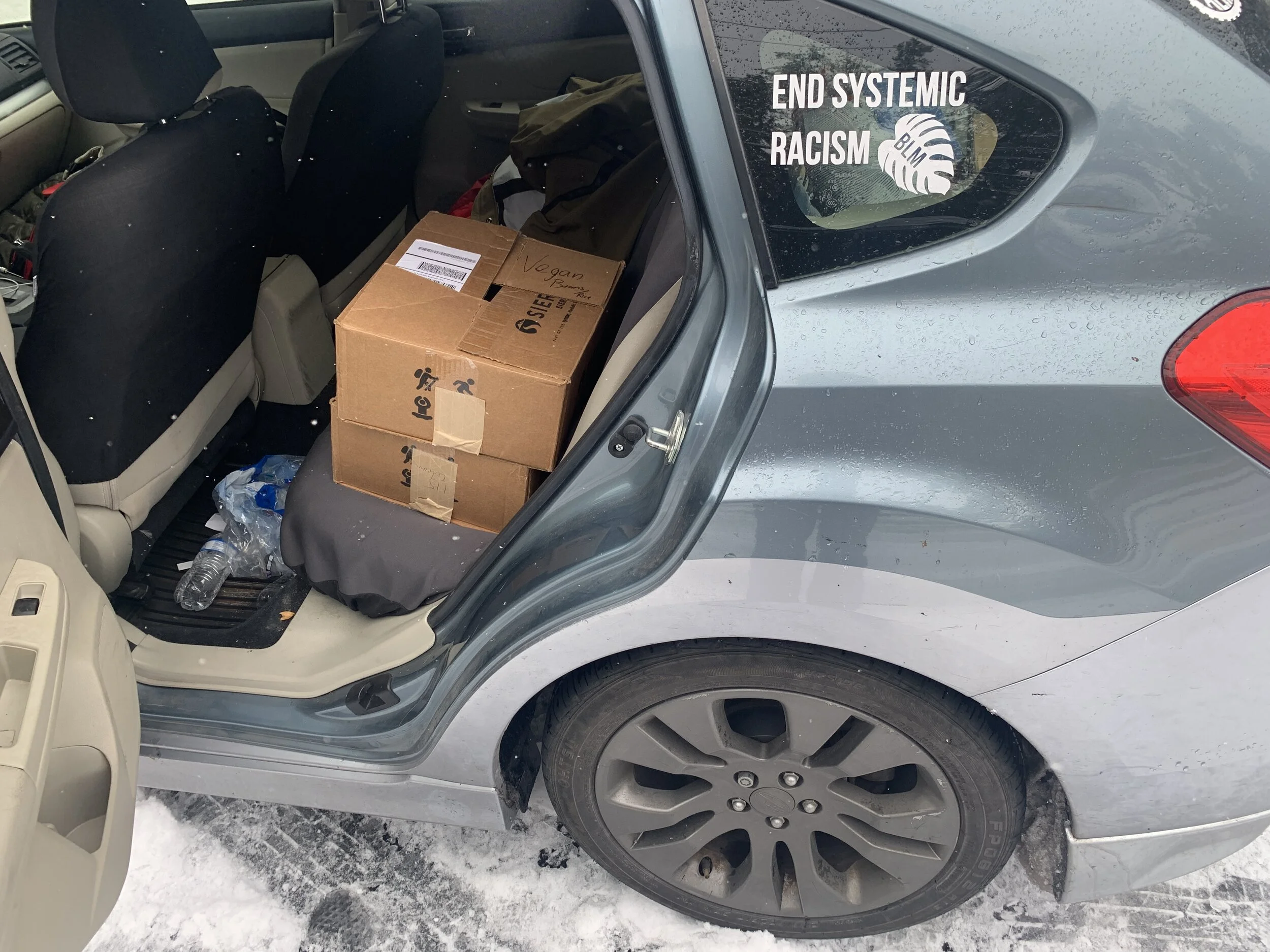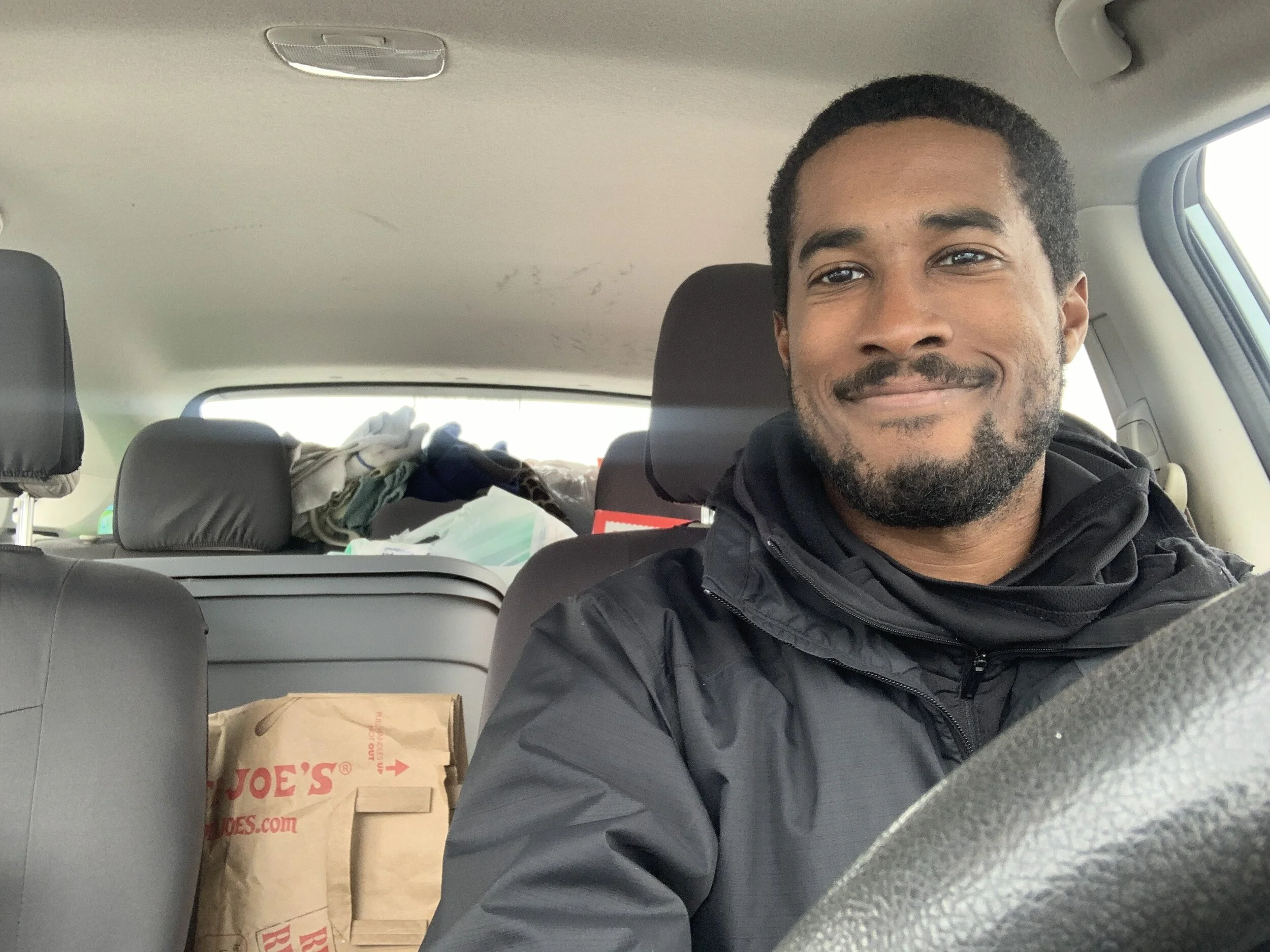It is 10:45 a.m. on Monday, January 24th, and the Abrome Facilitators and Learners just finished our first meeting of the week. Yes, unlike (presumably) all the schools in Central Texas, we are remote and have been since winter break. Well, sort of for all the schools in Central Texas. I’ll get back to that.
Our first day back from the break was scheduled for January 3rd, but recognizing that cases were quickly rising, we postponed our start date by a week to better assess the situation and to avoid bringing Learners back for one day before having to go remote. We told families that the lost week would be made up for by reducing spring break from two weeks to one. As expected, the numbers released by Austin Public Health on January 3rd pushed us into our risk level 5, meaning we would be remote for a while (assuming that institutions would not take necessary steps to help reduce the spread of Covid-19, locally).
Our remote looks quite different from what it looks like for most schools. Our remote is about holding space and maintaining connection with the Learners, knowing we will eventually get to come back together. During remote we host our daily morning meetings and afternoon roundups, and we host weekly Set-the-Week, Check-in, and Change-up meetings. We try to schedule 1:1 meetings with each Learner each week, with additional meetings for those who want it. And we schedule a variety of offerings that might be of interest to Learners, and support Learners who want to host their own offerings. We encourage Learners to attend Abrome meetings and offerings if it works for them, and to not attend if it does not. We have the flexibility to do so because we are a Self-Directed Education community, meaning we do not burden young people with a forced, narrow academic curriculum during pandemic times, just as we did not during pre-pandemic times. Nonetheless, remote is still an exhausting experience for our Facilitators, and a less than remarkable experience for most of the Abrome Learners. The Learners want to be together playing, creating, conversing, and learning together; and they want to be able to do it emergently, instead of according to an online schedule in a virtual space where attendance can be sporadic.
Conventional public and private schools cannot allow Learners to choose a path that works best for them during remote. Those schools rely on compulsory attendance, so the freedom to participate or not is anathema to them. But, because they are in the business of delivering academic curriculum to captive cohorts of students, they can quickly shift their product to remote delivery, as they had done in the spring of 2020. They could even do so relatively competently, assuming the schools are willing to support the teachers with the time and resources to do so. I am not saying going remote would be easy for them. Being remote is an inconvenience to the schools, and they would need to deal with irate parents demanding that their kids be in school, but the essential function of schooling remains the same. For the teachers, remote schooling is still exhausting. And for the students, remote schooling is certainly unremarkable.
But no matter how inconvenient or how poor the quality of remote schooling can be, no schools should be meeting in-person right now during this most infectious wave of the pandemic. Because schools are sites of transmission (including for superspreader events) every school had a social responsibility to their local community to go remote as soon as we entered into a period of uncontrolled community transmission of the disease, meaning every school should have been remote since the winter break. And every school that failed to do so (which I believe is every school, locally) now has a social responsibility to immediately go remote. Unfortunately, there are not many people in Central Texas, and virtually zero institutions, who agree that.
Many argue that because infections due to Omicron are “mild” relative to Delta infections that we should continue sending kids to school. Problem is, “mild” can still cause serious illness and death. In fact, daily deaths are higher now, nationally, than they were during the Delta wave, because of the extremely high number of infections. It also ignores that even “mild” illness can lead to long Covid and potentially very serious long-term medical conditions or disability that will shorten or greatly reduce the quality of life of millions of people.
Others say schools should be open because kids are unlikely to die from Covid-19. They’re also unlikely to die from a drunk driving accident, but few would advocate putting them in the car with a drunk driver. Further, like for adults, the consequences of infection are not a simple binary of live or die. Kids who get infected can still suffer greatly during the initial infection, they can suffer from long Covid, and an unknown number may develop serious health conditions that they will need to live with for years or decades into the future.
But even if they want to roll the dice on their children’s health, or other people’s children’s health, those who demand that schools stay open erase from the conversation all the adults who work in schools. Should teachers and staff sacrifice disability or death just so kids can go to school? The reopen schools crowd eagerly ignores the existence of the adults in schools each time they say “the kids will be fine if they get infected.”
And even if the lives of the school teachers and staff do not matter (to the open schools now crowd), each infection that is facilitated by in-person schooling leaves the facility at the end of the day and goes into the broader community. Each one of those infections can infect household and family members (kids have parents and guardians, too), they can seed superspreader events, and they can be the source of a mutation that creates a new variant.
And because of the aggressive spread of this disease, with record numbers of infections, even though it is “mild” compared to Delta, it is straining the capacity of the medical system, and it is crushing the spirits of medical workers who have been struggling to save lives for the past two years, largely without the support of the rest of society. This means that even if the “only people” who die from Covid-19 are those who “refuse to get vaccinated” or “had underlying conditions,” people are going to indirectly die from medical care they cannot get for other conditions because of the inability of the medical system to deal with the surge. By the way, those who refuse to get vaccinated and those with underlying conditions shouldn’t be dying from a disease that we can prevent from spreading.
There is simply no ethical medical or social justification for schools to be open right now. Kids are not safer at schools. Kids’ mental health is far more impacted by being surrounded by mass disability and death, and by adults and institutions who refuse to protect them. And as stated before, kids are also not the only people in schools, and schools are not separate from the broader community. Perhaps the most compelling unethical justification that can be made for schools to be open right now is that businesses need schools open so that their workers do not have to stay home with their kids during working hours. If we assume that keeping the wheels of capitalism turning is more important than the health of society, I guess we can accept the contribution schools are making to mass disability and death.
But, other than the ethical piece, there is another big problem with that argument. When infection becomes too widespread, the wheels of capitalism will begin to slow down. When people are seeing large numbers of their friends, family, and acquaintances getting infected, and some suffering greatly from it, many of them are going to modify their behavior. That modification may include staying home whether or not businesses or schools like it. It may lead to them dropping out of the workforce, or unenrolling from covid petri dish schools. It may lead to them withdrawing from engaging in the consumerism that the economy is built upon. And even if enough people are willing to risk infection, to work through infection and the lingering effects of infection, and are willing to head out into public while infected (as is now encouraged by business and the government), wide-scale illness will eventually leave businesses and schools without enough employees and customers to operate.
And we may be on the cusp of that right now. We were greatly saddened that schools did not preemptively go remote at the end of the winter break, when this wave was upon us. We had hoped that the schools would take their responsibility to their local communities seriously. Instead, they brought students, teachers, and staff together and contributed to the spread of the disease. Yes, public schools have the Governor to deal with; and they must deal with business interests, politicians, and parents who demand schools stay open; and with grifters who seek to profit from promoting the most selfish aspects of our nature; and they need to concern themselves with seat time for the sake of revenue. And yes, private schools also have to deal with much of the same else enrollment may plummet when families pull their kids from school because they don’t want to pay full tuition for remote schooling. But none of those pressures justify in-person schooling.
As of today, it looks like some schools in Central Texas are finally going remote or closing, at least for days at a time. But they are not doing it to stop the spread. They are doing it because they don’t have the ability to keep schools open because too many teachers and staff are unable to work because they’ve been infected or exposed (or disabled or killed). The schools should have gone remote during this most infectious wave of the pandemic before exposing the people they are supposed to care about and serve to the disease within the walls of the schoolhouse. The least they can do now is to go remote to help cut off routes of transmission within the schools, and into the community, so that we can expedite the end of this wave.
——
Cover photo by MChe Lee on Unsplash


